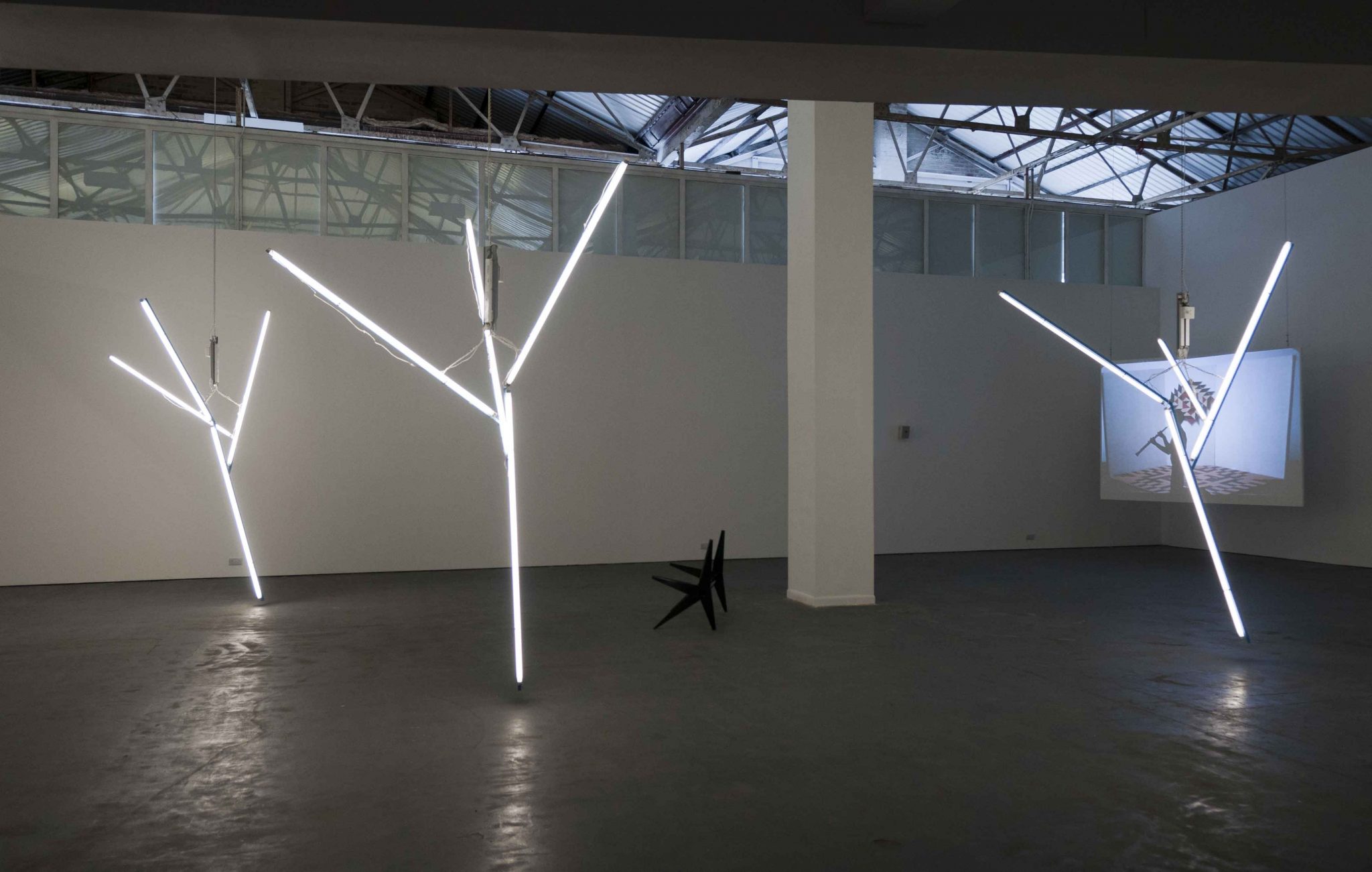I’ve always had a bit of a thing for Sheffield. It’s possibly something to do with falling in love with Pulp as a callow youth; more probably due to my prosaic Home Counties upbringing having led to a (perhaps misplaced) romanticism for the South Yorkshire city’s overcast weather and shifting – sometimes Brutalist, sometimes Victorian – civic infrastructure. Though mostly it’s because there’s a pub where you can buy an onion bhaji in a bap as a bar snack.
It seemed churlish then not to start this irregularly plotted journey round the UK’s off- spaces here. (‘Off-space’ is a rather useful expression in German-speaking circles that covers a plethora of what English speakers might call independent-gallery models). Especially as the gallery in question, S1 Artspace, has recently become all grown-up, with a cavernous new venue and role as cohost of the annual New Contemporaries exhibition of recent postgraduate practice – this year selected by artists Pablo Bronstein, Sarah Jones and Michael Raedecker. Roughly half the 40 participants are presented here (with the rest shown at Site Gallery, also in Sheffield), filling the main space, a former pool hall of industrial scale. Light spills into the gallery, and the exhibition area (which is complemented by a small, fairly ad hoc bookshop selling, among other titles, examples of the city’s zine culture) is surrounded by an atrium in which the current resident artists have their studios. It puts the visitor in the presence of art’s production; conversely, the artists at work are surrounded by the realised practice of their peers.
S1 describes itself as ‘artist-led’ rather than ‘artist-run’. It is an important distinction – made, presumably, as a consequence of its appointment in 2003 of a curator. That decision suggests the practical limitations of the self-organised model. Often the enthusiasm accompanying the setting up of an artist-run space fades as artists find the administration of the gallery eating into the time needed to make work. S1 was founded in 1995 with a kitty of £3,000, in a space above a nightclub a short walk from the present site, with the aim of providing studio space in the city centre for those involved (its name comes from its postcode district). A small project space staged exhibitions by its founding artists. The 2003 appointment of someone to administer that space, however, saw a growth in ambition, with solo shows from the likes of Karla Black, Heather and Ivan Morison, and Haegue Yang following. Yang’s exhibition formed part of the city’s Art Sheffield biennial in 2010, and was the swan song for the original site. S1 had effectively outgrown the space.
That’s the thing with artist-runs. They are either temporary measures (no bad thing in itself ), facilitating the production and exhibition of a network of individual practices for a limited time, before the market and personal circumstances perhaps sweep the protagonists along new avenues. Or they mature, solidify and become similar – at least structurally – to their more mainstream partners. Either model seems to suggest that the artist-run methodology is intrinsically finite, and in this context S1’s evolution to ‘artist-led’ seems a sensible, pragmatic one.
Such preparations for longevity, instigated by this administrative arrangement, allows the institution to follow artists through their professional progression, both in terms of practice development and careers. S1 used its move to the new space as a chance to invite back artists who had previously filed through its doors, inaugurating and, as the press release stated at the time, ‘testing out’ the new space with a group show, Fifteen, put together by the gallery’s curator of the past five years, Louise Hutchinson, and artist George Henry Longly. The latter has exhibited at S1 twice and now sits on the gallery’s Patrons committee. Haroon Mirza, winner of the Northern Art Prize in January and the Silver Lion at the Venice Biennale thereafter, is also a member and exhibited a collaborative piece with Giles Round in Fifteen, alongside work from Nicole Wermers, Torsten Lauschmann and Florian Roithmayr, among others. These artists are at points in their careers that are a step beyond the ‘emerging’ bracket – in the case of Mirza and his recent success, considerably so – which might present the gallery with the dilemma of whether it defines, and rises up with, that group or keeps promoting a generation below. The gallery’s second and third shows in the new space, a solo by Eva Berendes (who laid to rest any fears that the size of the new gallery could prove too much of a challenge) and A Threepenny Opera, a four- person group show of work by Martin Boyce, Claire Hooper, Cara Tolmie and Mark Wallinger, suggests that the artists involved may be becoming more established. Yet with a forthcoming open- submission film-and-video salon, an annual studio bursary for recent Sheffield graduates and the cohosting of New Contemporaries, S1 seems confident it can straddle both domains.
